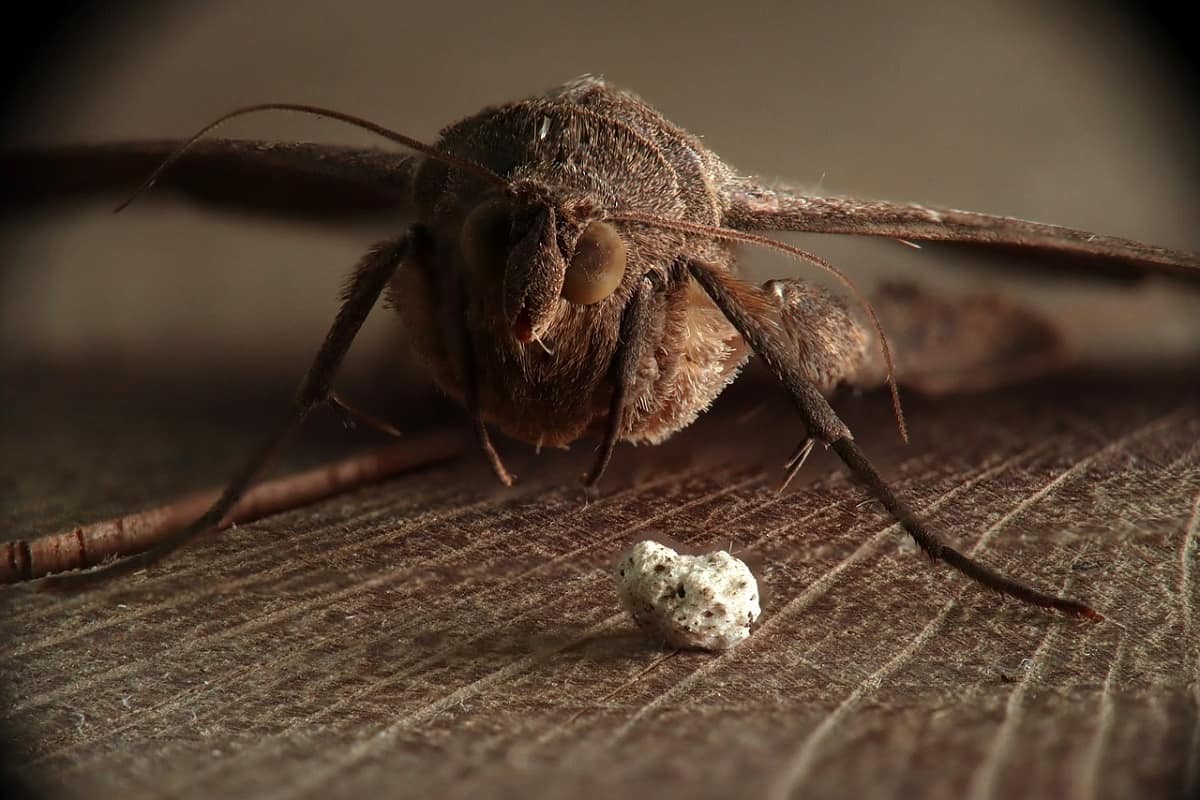Moths are known as the symbol of change and transgression. Many people don’t actually know that many moths are actually butterflies in the making. With time, butterflies will drop their moth skin and fly off. However, what do they do in the meantime? Many people ask this question since they can’t remember the last time they saw a moth during the day. So, where do moths go during the day?
Moths are completely defenseless, and their only option is to hide away from predators, so that’s what they do during the day. They will usually find a dark spot, preferably inside someone’s house or an attic where they can hide from birds that would gladly feast on them. They’ll stay there until nighttime.
When we’re talking about moths, it’s important to understand that they belong to the class of animals that have absolutely no way to defend themselves when predators (in this case birds and lizards) come their way. They can either hide or try to fly away.
In this article, we’ll be taking a closer look at moths and finding out what they are doing during the day and how are they staying safe. Today, we’ll be answering what does moths do during the day, where do they hide, and why do they like light but don’t come out during the day.
Let’s get started!
Where Does a Moth Go During the Day?
A moth’s main priority is to stay safe during the day, so they’ll spend the largest part of their day hiding. This actually isn’t an issue for them, as there are many moths that don’t eat at all.
Even though there are some species of moth that eat, most species don’t eat for their whole life. There are even species that literally don’t even have a mouth. That’s why they don’t have any problems hiding – they don’t have to do anything else.
A moth’s primary goal in life is to mate and lay eggs, everything else comes second to that. That’s why there are so many moths that only live for a few days. They don’t eat, so they can’t live much longer. Even though animals are known to live for much longer without eating (especially reptiles) – these animals don’t. A few moths suck on nectar, but aside from that, they don’t really eat.
If a moth finds a safe spot, preferably a dark spot that’s also enclosed, it will hide. However, if it can’t, it will fly away from anything that’s chasing it. Its most prominent predators are birds, especially smaller birds, as they enjoy insects, but frogs, lizards, even rodents all pose great dangers to these species.
However, moths are often quick enough to relieve any pressure that’s put on them by these predators, so they can run off quickly. Their greatest advantage is the fact that they’re so small, so they can basically hide into any hole where a predator might not be able to follow them.
Where Do Moths Hide?
Saying this with little irony – your attic. Moths prefer dry, dark spaces. Also, spaces that don’t have access to other animals, especially birds – so, attics make perfect solutions for this. It’s not uncommon to find moths under the porch, or even in your room, as they’re going to use any chance they can to get into your house.
That’s actually okay, as they’re completely harmless, there’s absolutely no damage they can do, and your spider is definitely going to be thankful for you letting the moth in. Aside from those spaces, moths are also known to be attracted to light, but that’s a completely other story.
Most moths don’t actually make it too far from the place where they were born – born possibly being the wrong word here, since they’re laid (as eggs). A lot of moth species live such short lives that it’s completely impossible for them to go too far from the place where they grew up, and you might even find them coming back to that place and use it as a hiding spot.
More on that in ???
Why Do Moths Like Light but Not Come Out During the Day?
Well, this is actually an interesting question to answer. Moths will instinctively only come out at night as they’re at their safest then, however, they’re inescapably attracted to artificial lighting to the point where they literally kill themselves for it.
The reasoning behind this is quite simple, actually. “Like a moth to a flame.” is a proverb that’s definitely correct. Moths actually have eyes that are tuned to faint light. This means that they basically get used to the sunlight during the day, and they recognize it as just a light.
However, when faced with powerful artificial illumination, they’re basically witnessing more life than their little nerves could ever comprehend, so it’s basically a super-stimulant to them.
The day Thomas Alva Edison patented a lightbulb is probably the darkest day in moth history. Because moths’ eyes work like telescopes, much like many other insects’ eyes, they not only see a super-stimulant, they see many of them. It’s completely impossible for them to resist these urges.
The moths actually believe that this is the moon, as it’s in their natural instinct to follow the moon.
Scientists believe that there is actually much more to this moth behavior, but one thing is certain – electronic lights have really knocked out moth evolution and it’s unlikely to continue any time soon.

